AP Physics 2: 14.1 - 14.3
1/40
Earn XP
Name | Mastery | Learn | Test | Matching | Spaced |
|---|
No study sessions yet.
41 Terms

D) D
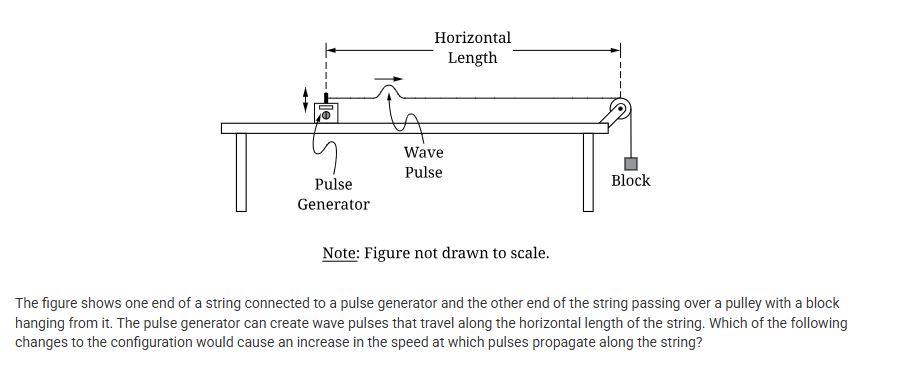
B) Hang a block of greater mass from the string.

D) Sound waves are longitudinal waves. Particles in the medium move parallel to the direction of wave propagation.
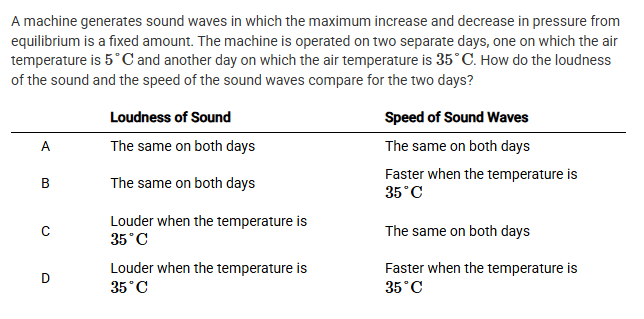
B) B
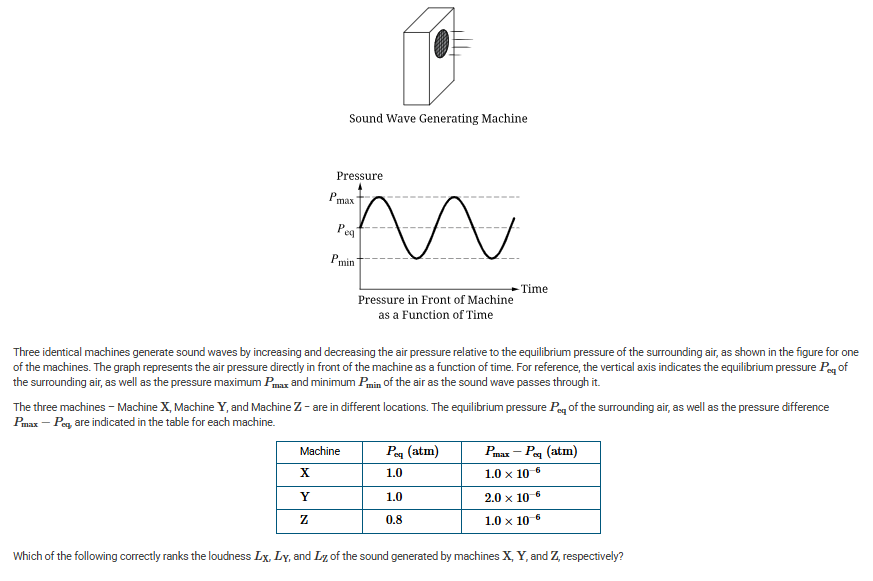
B) LY > (LX = LZ)
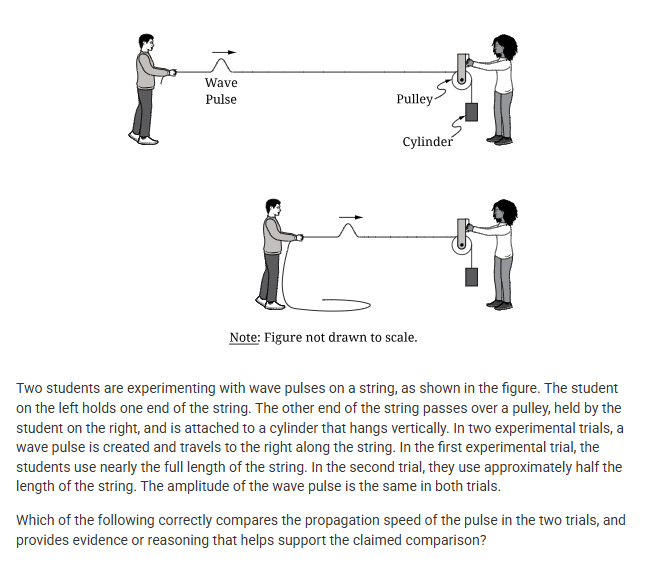
D) The pulse speed is the same in both trials. The string’s tension and mass per length are the same in the two trials.
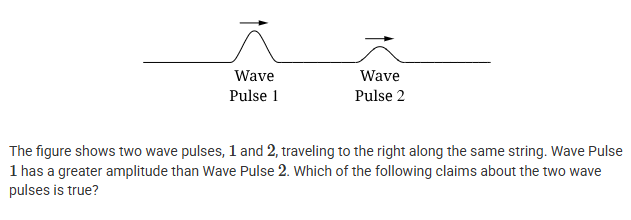
B) Wave Pulse 1 carries more energy than Wave Pulse 2.
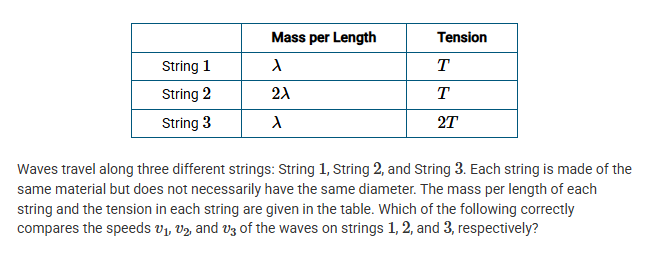
D) v3 > v1 > v2

C) No. The speed at which a wave pulse propagates along a string is independent of the amplitude of the wave.
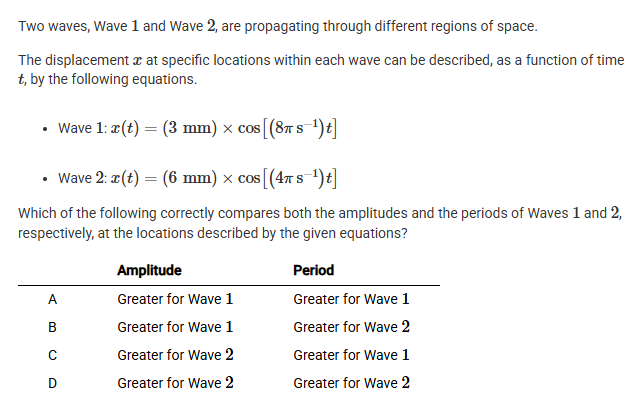
D) D

A) The frequency increases. The speed of the wave on the string increases.




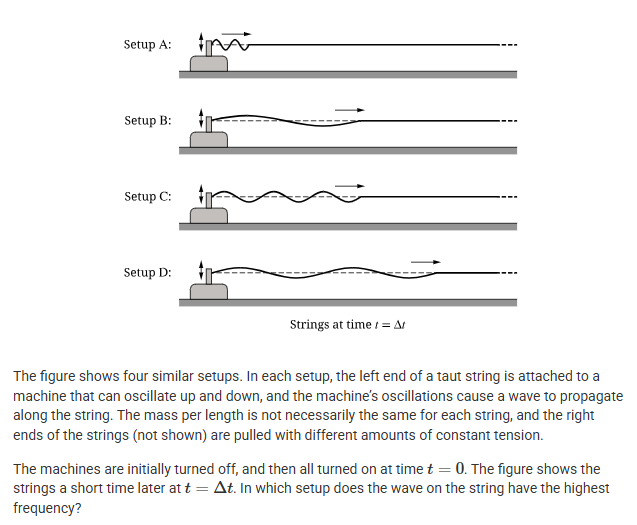
C) Setup C
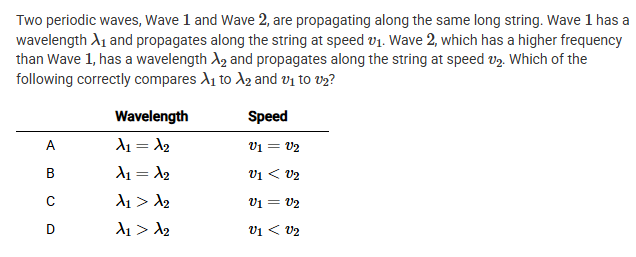
C) C

B) Yes. The amplitude and the frequency of a wave are independent of each other.

A) Speaker X. The frequency is greater for Speaker X.
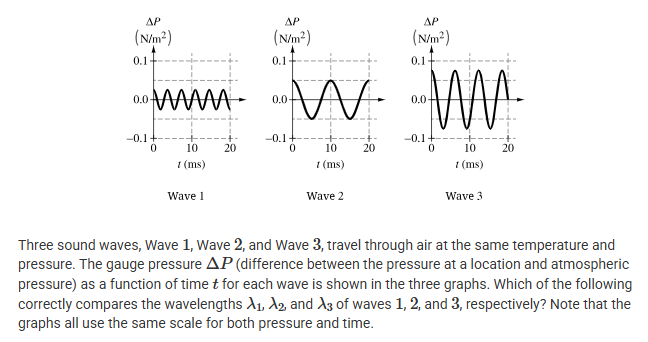
C) h2 > h3 > h1

A) Yes, the claim is correct. A wave pulse incident on a boundary between two mediums will result in both a reflected and a transmitted wave or wave pulse.
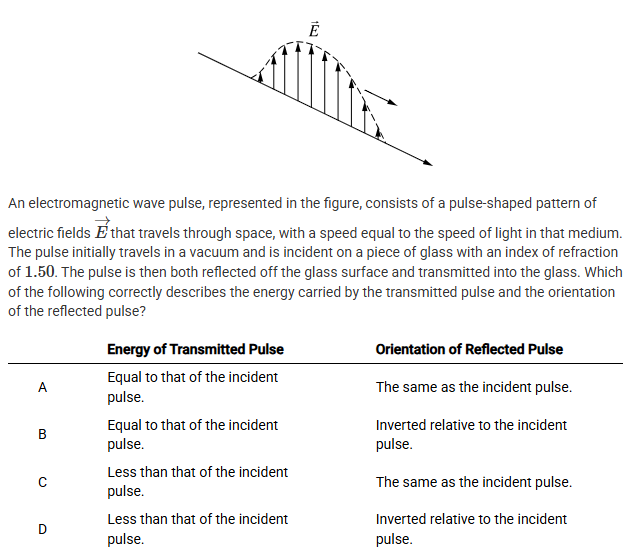
D) D

D) The frequency stays the same in the thick string. A wave’s frequency does not change when it travels from one medium to another.
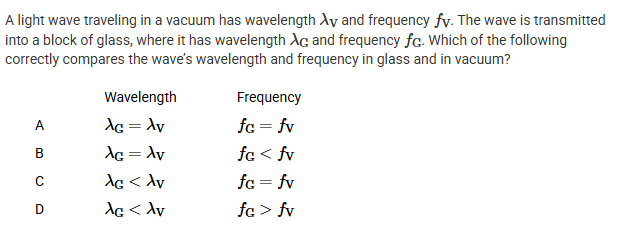
C) C
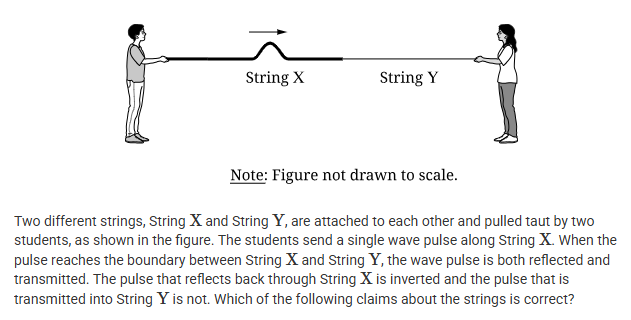
D) The mass per length is greater for String Y than for String X.
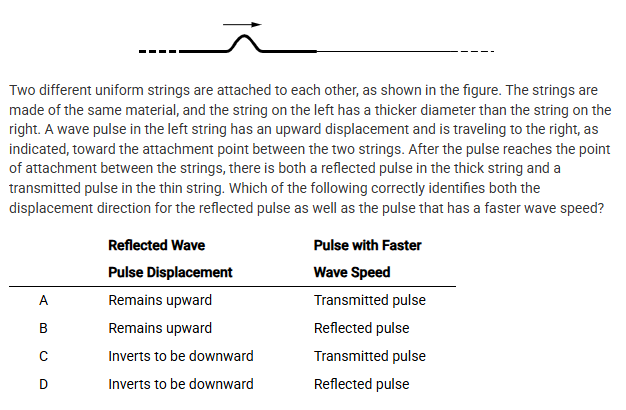
A) A
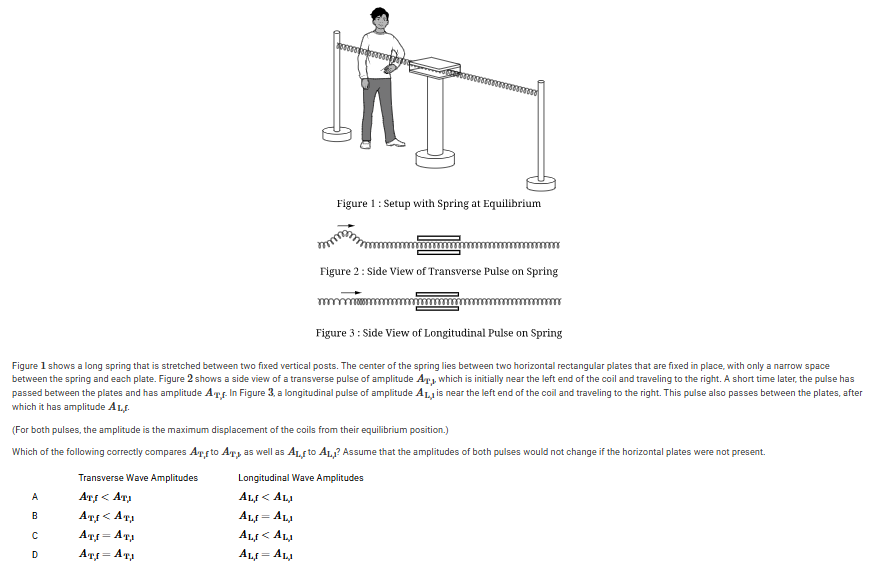
B) B
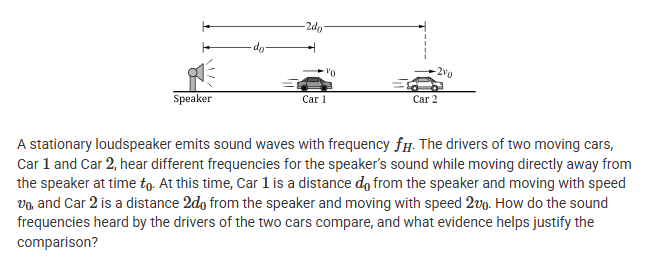
B) The driver in Car 1 hears a higher frequency than the driver in Car 2. Car 2 is moving away from the speaker faster than Car 1.
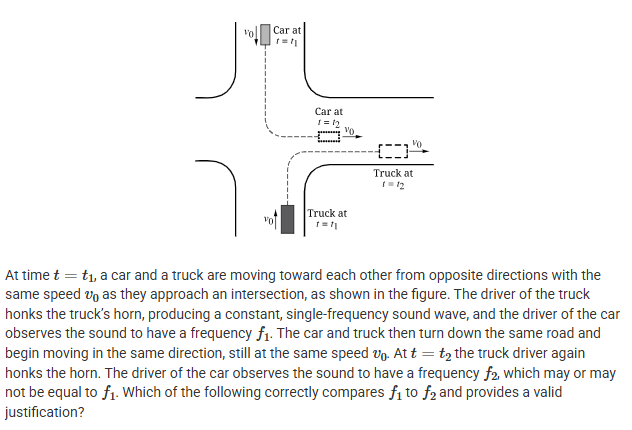
C) f1 > f2. The car and truck are moving toward each other at time t1 and have the same velocity at time t2.

A) The two cars could be moving in the same direction, with Car 1 behind and moving faster than Car 2.
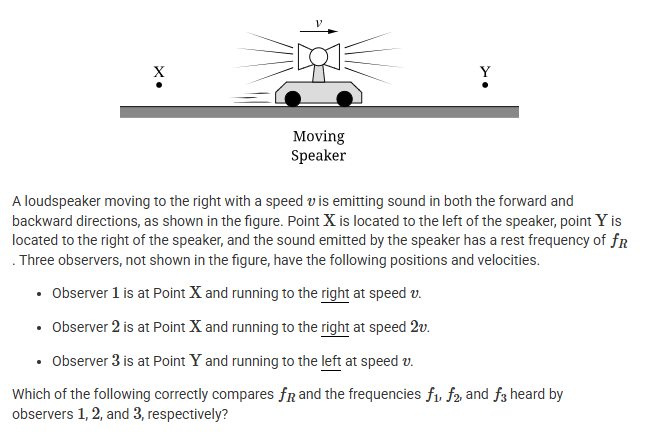
B) f3 > f2 > (f1 = fR)
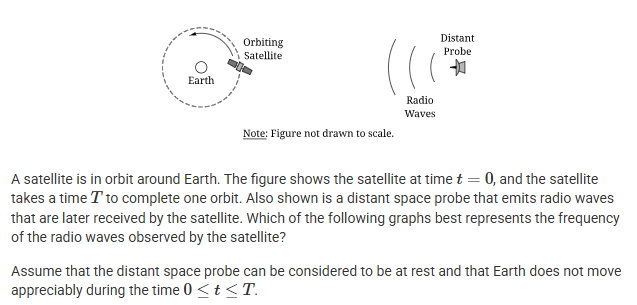


B) f1 > f0 > f2
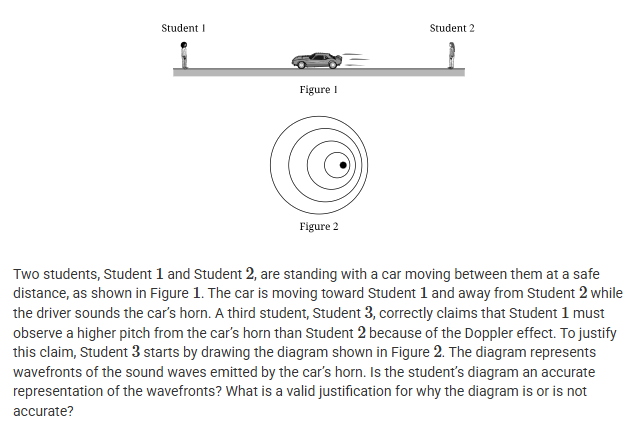
C) No. The diagram indicates that the waves reaching Student 1 have a lower frequency than the waves reaching Student 2.

C) 2fbeat, 1

B) |(1/TA) - (1/TB)|

A) The two waves pulses exhibited constructive interference.
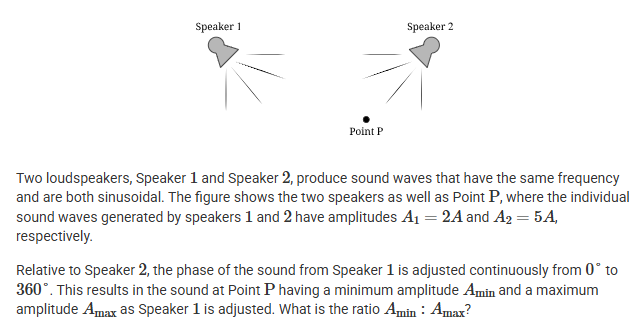
D) 3 : 7
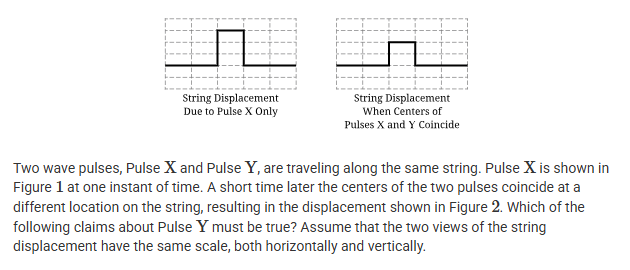
D) Pulse Y must displace the string downward.
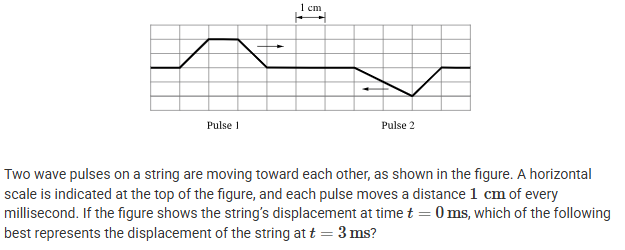


C) 2(v/L)
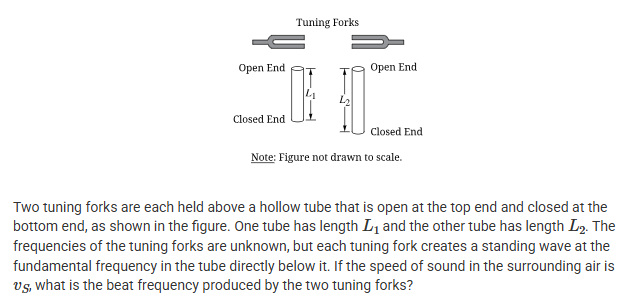
D) (vS/4)(|(1/L2) - (1/L1)|)

A) 1: 2